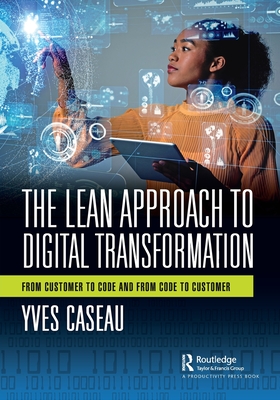Designing Service Machines: Translating Principles of System Science to Service Design (Translational Systems Sciences)
暫譯: 設計服務機器:系統科學原則在服務設計中的應用(轉譯系統科學)
Ram Babu Roy, Paul Lillrank, Sreekanth V. K., Paulus Torkki
- 出版商: Springer
- 出版日期: 2018-07-12
- 售價: $2,400
- 貴賓價: 9.5 折 $2,280
- 語言: 英文
- 頁數: 82
- 裝訂: Hardcover
- ISBN: 9811309167
- ISBN-13: 9789811309168
-
相關分類:
管理與領導 Management-leadership
海外代購書籍(需單獨結帳)
相關主題
商品描述
This book presents a general conceptual framework to translate principles of system science and engineering to service design. Services are co-created immaterial, heterogeneous, and perishable state changes. A service system includes the intended benefit to the customer and the structure and processes that accomplish this benefit. The primary focus is on the part of the service system that can reproduce such processes, called here a Service Machine, and methodological guidelines on how to analyze and design them. While the benefit and the process are designed based on the domain knowledge of each respective field, service production systems have common properties. The Service Machine is a metaphor that elicits the fundamental characteristics of service systems that do something efficiently, quickly, or repeatedly for a defined end. A machine is an artifact designed for a purpose, has several parts, such as inputs, energy flows, processors, connectors, and motors assembled as per design specifications. In case of service machine, the components are various contracts assembled on contractual frames. The book discusses Emergency Medical Services (EMS) and Emergency Departments (ED) as cases. They illustrate that service machines need to be structured to adapt to the constraints of the served market acknowledging the fact that services are co-created through the integration of producers’ and customers’ resources. This book is highly recommended for those who are interested in understanding the fundamental concepts of designing service machines.
商品描述(中文翻譯)
本書提出了一個通用的概念框架,以將系統科學和工程的原則轉化為服務設計。服務是共同創造的無形、異質和易逝的狀態變化。服務系統包括對客戶的預期利益以及實現該利益的結構和流程。主要重點在於服務系統中能夠重複這些流程的部分,這裡稱之為服務機器(Service Machine),並提供了分析和設計它們的方法指導。雖然利益和流程是基於各自領域的專業知識進行設計的,但服務生產系統具有共同的特性。服務機器是一個隱喻,突顯了服務系統的基本特徵,這些系統能夠高效、快速或重複地為特定目的執行某些操作。機器是一種為特定目的設計的工藝品,具有多個部分,例如輸入、能量流、處理器、連接器和馬達,這些部分根據設計規範組裝而成。在服務機器的情況下,組件是根據契約框架組裝的各種合約。本書討論了緊急醫療服務(Emergency Medical Services, EMS)和急診部門(Emergency Departments, ED)作為案例。這些案例說明了服務機器需要結構化,以適應所服務市場的限制,並承認服務是通過生產者和客戶資源的整合共同創造的事實。本書非常推薦給那些有興趣了解設計服務機器基本概念的人。




![Springer Handbook of Automation [With DVD ROM]-cover](https://cf-assets2.tenlong.com.tw/ig/015/667/885/9783540788300.jpg?1560918831)









